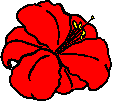 Shields
Gardens
Ltd.
Shields
Gardens
Ltd.| Home |
| Daylilies |
| Rare Bulbs |
| Clivia |
| Seed Sales |
| E-Mail and Chat |
| Photo Gallery |
| Information |
| Sources |
| Guest Sites |
| Societies and Clubs |
| Links |
| People |
| About Us |
| Blogs |
If you are starting with freshly harvested seeds from your own plants, be sure to wash the seeds well before trying to germinate them. There is a translucent membrane surrounding the seeds, dividing them into three groups in most berries. Remove that membrane. You can tell this memberane from the skin of the seeds themselves because it slides around over the seed as you try to remove it.
If you are not sure your Clivia seeds are fresh, it is always wise to start them by soaking them overnight in clean tap water or distilled water. If they are old or shrunken, you should change the water the next morning and soak for another 24 hours.
According to Prof. Gert Venter of South Africa, writing in the [clivia-enthusiast] list on Yahoo Groups, there are just three conditions necessary for successful germination and starting of Clivia seeds:
Following the statement of Prof. Venter and the practice of several other clivia growers, we suggest that you proceed as follows:
When the seeds have all germninated and grown their first real leaf, they can be transplanted into a well-drained soilless potting mix.
If you feel that you must start your seeds in soil, we can make the following suggestions:
Plant the seeds by pressing very lightly into the surface of a well-drained soilless potting mix. We use Promix and sand and granite chick starter grit (1/8 inch mesh) in a ratio of 2 : 1 : 1 parts by volume. Wet the mix well with water and cover the pot loosely with a sheet of clear plastic, such as Saran® wrap. You can then water from below as the surface of the potting mixture dries out.
Once the seed sprouts, which can come anywhere from 2 weeks to 6 months after planting, the new root shoot will push the seed out of the soil. You can make a new hole for the root with your finger when the shoot is about 1 to 2 inches long. Insert the root into the hole and press or wash the soil gently back into the hole around the root.
Once leaves start growing, remove the loose sheet of plastic and continue growing your seedling in bright indirect light or under fluorescent lights. We prefer fluorescent lights about 6 to 8 inches above the growing leaf tips. At this time, start feeding your plant with a dilute solution of a soluble fertilizer. We like Peters® 20-20-20 with trace elements used at ½ teaspoon per gallon of water applied at every other watering.
Clivia seeds, like most seeds in the Amaryllis Family (Amaryllidaceae) are classified as "recalcitrant" ‐ that is, they refuse to go into a dormant state. Left at room temperature and dry for a long time, they will slowly shrink and either germinate dry or else eventually die. You can store them for a few months by putting the seeds in a sealed plastic bag. A few drops of water added will help retain viability. It is a good idea to only store washed and sterilized seeds this way. Fungus (mold) can slowly grow in a refrigerator. It is inadvisable to freeze clivia seeds; that should kill them quickly.
If your young clivia seedlings seem to get stuck at the two-leaf stage, see our discussion of the possible causes of this condition at StuckClivia.
For more advice on growing your clivias, see on the web at CliviaNet Culture.
For information about pollination of clivia in the wild, see on the web at CliviaNet Pollination.
We wish you good luck with your new Clivia seeds.
SHIELDS GARDENS LTD.
| Tel: 1-317-867-3344 | ||
For information about this account, contact:
James E. Shields, webmaster
31 March 2011
© Copyright 2011 by SHIELDS GARDENS LTD. All rights reserved.